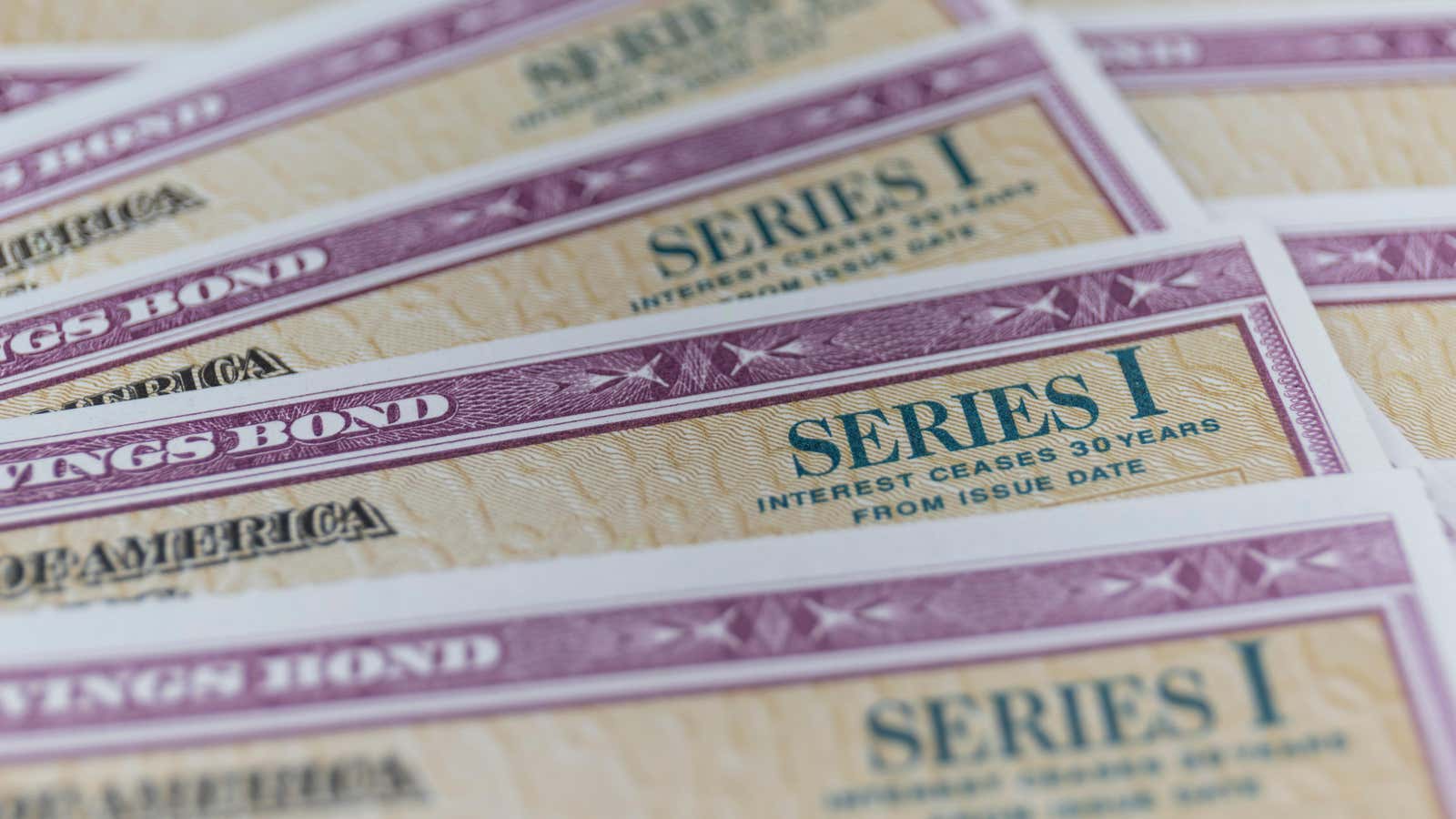Why You Should Buy Series I Bonds Now

As inflation soared to its highest level since 1981, you’ve probably noticed how much it affects the cost of many of your day-to-day needs. But even beyond your checkbook and credit card statement, inflation eats into the purchasing power of the money you keep in a savings account. One solution: Series I US government savings bonds.
To start, here’s a little introduction to bonds , as we’ve covered in the past:
When you buy a bond, you are essentially buying debt and lending money to a company (or government). Instead of investing in the company itself, you give them money and they agree to pay you interest. This interest is called a “coupon” and is paid at a set rate and schedule. A bond also has a maturity date: the date the issuer must repay the amount it borrows. You can also sell your bond before the maturity date. Depending on what the interest rates look like when you sell, you may get more or less than what you paid.
This interest rate you earn is known as the compound rate and it is reviewed every six months in May and November to reflect inflation. If you buy the bonds before October 28, you will lock in the current interest rate of 9.62% for the first six months. The rate is expected to be 6.84% for the next six months (still good, but not as good), but this will be confirmed by the US Treasury on November 1st. You can buy up to $10,000 this calendar year.
How do Series I bonds work?
You must hold the bonds for at least a year before cashing them out, and if you cash them out before five years, the last three months’ interest will be an early cash out penalty. But even if you give up your earnings for the last three months, your money will grow more than if it was just sitting in a savings account.
The only place to buy them is the US Department of the Treasury website . It takes approximately 10 minutes to create an account, and you must have a Social Security number and be a US citizen, resident, or a US government civil servant to be eligible. When creating an account, if you do not have a business or trust, select the “individual account” option and fill in the personal information with your bank account from which your funds will be withdrawn. For the rest of the process, follow this step by step video explanation that will walk you through buying bonds.
Should you buy bonds?
Series I bonds are a great alternative for people who have savings in the bank and don’t need money for at least a year. Even if you withdraw the money after a year and are penalized with three months of interest, you will end up making more profit than if you left it in your bank account. But as good as these bonds sound, they’re not for everyone. You should not buy Series I bonds if you plan to use the money within the first 12 months. This also means that you do not have to buy them with money from the reserve fund or withdraw money from credit cards in order to buy them.